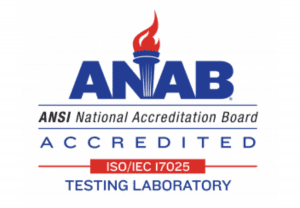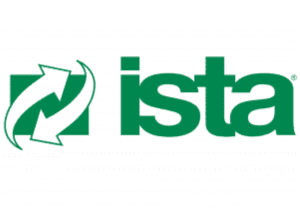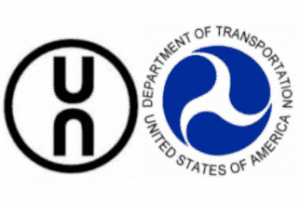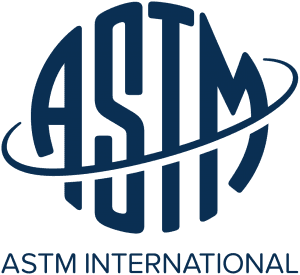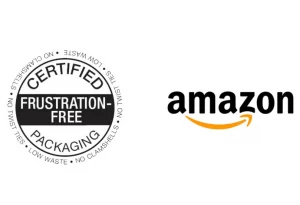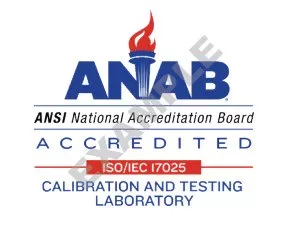Hazardous Goods Package Testing
All hazardous good package testing is required to successfully complete testing before it is available for product transportation. Failure to follow these regulations can result in severe injury to those managing the package and fines to the shipper of the product. Rigorous testing is essential to ensure a package holding hazardous goods can withstand all typical road hazards experienced during transportation and guarantee safety when managing hazardous goods packages in transit. Utilizing the correct packaging during shipping depends on the given package’s hazard classification and its physical attributes. For example, shipping corrosive elements in metal packaging would chemically react and the hazardous goods would eventually break down the metal packaging used to hold it.
What is Hazardous Goods Package Testing?
Hazardous Goods Package Testing is necessary.
Any packaged hazardous material requires compliance with regulatory standards to ensure containment of the material through the entire distribution cycle. Packaging safety requirements set forth by the Department of Transportation (DOT) and International Air Transport Association (IATA) govern the transportation of hazardous goods by ground and air. Shipments holding hazardous goods must be packaged in performance packaging consisting of inner and outer packaging designed, evaluated, and certified for the containment of hazardous materials. These packaging systems can then be named by United Nations (UN) markings specifying the certification for containment of specific hazardous material classes and packing groups.
How To Certify Your Hazardous Goods Packaged Product For UN/DOT PHMSA, The Pipeline and Hazardous Materials Safety Administration
- Class 1 - Explosives
- Class 2 - Gasses
- Division 2.1 Flammable Gasses
- Division 2.2 Non-Flammable, Compressed Gasses
- Division 2.3 Toxic Gas
- Class 3 - Flammable Liquids
- Class 4 - Flammable Solids
- Division 4.1 Flammable Solids, Self-Reactive Substances, and Solid Desensitized Explosives
- Division 4.2 Substances Liable to Spontaneous Combustion
- Division 4.3 Substances That in Contact with Water Create Flammable Gasses
- Class 5 - Oxidizing Substances and Organic Peroxide
- Division 5.1 Oxidising Substances Other Than Organic Peroxides
- Division 5.2 Organic Peroxides
- Class 6 - Toxic and Infectious Substances
- Division 6.1 Toxic Substances
- Division 6.2 Infectious Substances
- Class 7 - Radioactive Material and Fissile Material (Capable of Nuclear Explosion)
- Class 8 - Corrosive Substances
- Class 9 - Miscellaneous Dangerous Substances and Articles
UN Packaging Codes / Hazardous Goods Package Testing
The storage and transportation of hazardous materials (HAZMAT) is overseen and regulated by federal and international law. A comprehensive marking system called the UN marking guide was developed so that HAZMAT packaging can describe what type and how much of a material may be transported within a package. A UN code is a universal system of demarcation developed by the United Nations and used internationally for the classification, packaging, marking, and labeling of dangerous goods to better transport them safely. Rigorous testing is required before a UN certification mark can be given.

| Character | Description |
|---|---|
| The United Nations Coding/Marking System | |
| Type of Package | 1 = Drums/Pails 2 = Barrels 3 = Jerricans 4 = Boxes 5 = Bags 6 = Composite Packagings |
| Material of Construction | A = Steel B = Aluminum C = Wood D = Fibre F = Reconstituted Wood G = Fiberboard H = Plastic |
| Category Type | 1 = Closed Head 2 = Open Head |
| Packaging Group for Container Tested | X = Packaging Group I, II, and III Y = Packaging Group II and III Z = Packaging Group III Packaging Group I: Great Danger – High Hazard Level Packaging Group II: Medium Danger – Medium Hazard Level Packaging Group III: Minor Danger – Low Hazard Level |
| Maximum Gross Mass or Specific Gravity | Packaging Intended for Solids: (powders, pills, capsules, tablets) or that have inner packaging, this marking will indicate the maximum gross mass (weight) in kilograms. Packaging Intended for Liquids: Density or Specific Gravity of Material Packed |
| Solids or Inner Packaging | Hydraulic Pressure in Kilo-Pascal (kPa) For Packaging Intended for Solids or That Have Inner Packaging, Upper Case “S” Will Follow the Gross Mass |
| Year of Manufacture | Current Year |
| Location of Manufacture | Country Where Container Was Manufactured |
| Manufacturer Code | Code for UN Certifying Agency or Manufacturer |
Transportation of Hazardous Materials Regulations – 49 CFR Part 178
Part 178 Specifications for Packagings
This section of the code of federal regulations for the transportation of hazardous materials details the manufacturing and testing specifications for packaging and containers used to transport hazardous goods.
Subpart M Testing of Non-Bulk Packagings and Packages
- § 178.600 Purpose and Scope
- § 178.601 General Requirements
- § 178.602 Preparation of Packaging and Packages for Testing
- § 178.603 Drop Test
- § 178.604 Leakproofness Test
- § 178.605 Hydrostatic Pressure Test
- § 178.606 Stacking Test
- § 178.607 Cooperage Test for Bung-Type Wooden Barrels
- § 178.608 Vibration Standard
- § 178.609 Test Requirements for Packaging for Infectious Substances
The testing is done to ensure that the package can withstand the stressors and hazards it may encounter during transportation and storage.
There are several types of tests that can be performed on hazardous goods packages, including:
1. Drop test – This test evaluates the impact resistance of the package by dropping it from a specific height and angle.
2. Compression test – This test evaluates the resistance of the package to external forces that may cause it to collapse or deform.
3. Vibration test – This test evaluates the effect of vibrations on the package during transportation.
4. Leakage test – This test evaluates the ability of the package to contain any hazardous material in case of a leak.
5. Temperature and humidity test – This test evaluates the resistance of the package to extreme temperature and humidity conditions.
At the end of the testing process, packages that have passed the tests are deemed suitable for transporting and storing hazardous materials.
Why Purple Diamond for Hazardous Goods Package Testing?
Purple Diamond is proud to rank among a select few companies authorized by PHMSA as an approved third-party hazardous goods package testing laboratory following Hazardous Materials Regulations. We offer rigorous testing for transporting hazardous goods across a wide range of industries. Our dedicated efforts include everything from helping pharmaceutical customers assess their healthcare products within our fully certified lab to improving consumer packaged products with reliability and fragility testing.
At Purple Diamond, the integrity of your packaged product is our number one priority during hazardous goods package testing. Our team is committed to delivering high-quality results as we develop a comprehensive solution to your specific testing needs.
The Pipeline and Hazardous Materials Safety Administration is an operating administration within the U.S. Department of Transportation that develops and enforces regulations for the safe, dependable, and environmentally sound operation of the nation’s 2.6-million-mile pipeline transportation system and nearly 1 million daily shipments of hazardous materials by land, sea, and air.
At Purple Diamond, we offer a free consultation or a guided tour of our facilities. Consultations can be done over the phone or on zoom, so choose what suits you best. To get in touch, go to our Contact Us page and fill out the form or book an appointment using the calendar below. Our goal is to assist you in any way possible, so please don’t hesitate to contact us. Thank you so much for reading down this far and thank you for considering Purple Diamond as your dedicated testing, engineering, and design facility for all of your packaging needs.
Related Testing Standards
- ASTM D642
- ASTM D685
- ASTM D880
- ASTM D951
- ASTM D999
- ASTM D3078
- ASTM D3103
- ASTM D3285
- ASTM D4169
- ASTM D4332
- ASTM D4728
- ASTM D5265
- ASTM D5276
- ASTM D5277
- ASTM D5487
- ASTM D6055
- ASTM D6179
- ASTM D6344
- ASTM D6653
- ASTM D7386
- ASTM F88
- ASTM F1140
- ASTM F1886
- ASTM F1929
- ASTM F1980
- ASTM F2096
- ASTM F2250
- ASTM F3039
- ASTM D1596
Contact Us
Accreditations
Affiliations
At Purple Diamond, we offer a free consultation and a guided tour of our facilities. If you’re nearby, feel free to drop by. Consultations can be done over the phone or on zoom, so choose what suits you best. To get in touch, go to our Contact Us page and fill out the form or book an appointment using the calendar below. Our goal is to assist you in any way possible, so please don’t hesitate to contact us. Our website contact form is located at www.purple-diamond.com/contact-us, but we promise to get back to you soon, no matter which method of communication you choose.
hazardous goods, package testing, dangerous goods, UN specification packaging, leak testing, drop testing, impact testing, vibration testing, compression testing, stacking testing, temperature testing, humidity testing, pressure testing, permeability testing, corrosion testing, flammability testing, toxicity testing, hazardous materials, transportation of dangerous goods, packaging regulations

